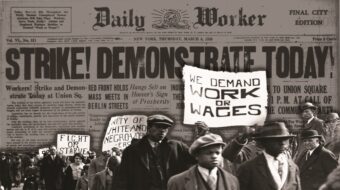
Last Friday, the Bureau of Labor Statistics issued its employment report for February. Most news coverage used terms like “solid” and “gaining strength”, but all is still not well.
The 236,000 new jobs might have been “better than expected,” but are still inadequate. More to the point, that number is unlikely to be sustained in coming months.
The average for the last 3 months (including February) is 191,000, only slightly above the average for the last year. January’s growth was revised down to 119,000 — a below-average figure probably due to weather and seasonal adjustments. February’s better weather brought relatively good numbers, which boosted the average, especially in construction. Last year, strong numbers in the winter were followed by months of very slow growth. There is nothing to indicate that higher numbers are here to stay.
If we keep up at the rate we have been going for the last year, it will be 2020 before the jobs deficit is made up. Even then, we would only be at the pre-recession level, which left literally millions of people, especially African American and Latino youth, outside the normal job market. Today, the official unemployment rate for ages 18-19 ranges from 19 percent for white youth to 36 percent for African Americans. The real rates range from 39 percent to 62 percent.
The February report also showed unemployment declined from 7.9 percent to 7.7 percent. But much of that is the result of unemployed workers giving up the search for jobs – at which point they are no longer counted as unemployed. This should be no surprise. Long-term unemployment remains at record levels. If you have been out of work six months or longer, the chances of finding another job are slim, and many grow discouraged and give up actively looking.
The February report shows the effect of the creeping austerity policy that has overtaken government since the end of the stimulus in 2010. Another 10,000 jobs were lost in state and local government, bringing the total losses to 750,000 since the start of the recession. In the past, keeping pace with growing population and other needs, government has continued to add jobs during recessions. If previous growth rates had continued, government employment would have gained, not lost, 750,000. The budget squeeze on state and local government, only partly relieved in 2009 and 2010 by the stimulus, has really cost 1.5 million jobs directly, and probably 2 million counting the indirect losses. The result: more crowded classrooms, libraries closed, less efficient government service — and an overall unemployment rate of 7.7 percent instead of 6.5 percent.
The loss of government jobs and the loss of jobs from private companies doing business with the government will only accelerate as the sequester kicks in. Estimates of these new losses range from 750,000 to 2 million. Along with the payroll tax hike that took effect Jan. 1, we can expect at least 142,000 fewer jobs per month for the rest of the year.
That’s bad enough. But Congress is facing an artificial calendar of cutbacks and crises. The continuing resolution, the debt limit, the budget for the coming year — all these are opportunities for Republicans to blackmail the nation into even further cuts: more pain for working people; a nation weakened by deteriorating infrastructure and education; and more jobs lost. Continuing government cutbacks act as an anchor, holding back any chance of a real recovery.
There are alternatives. The Congressional Progressive Caucus has introduced a “back to work” budget that cancels the sequester and funds infrastructure, education, other public works, and provides aid to states and local communities to rehire laid-off teachers, firefighters and other public employees. All funded by closing tax cuts and loopholes enjoyed by the super-rich and corporations, and cutting military spending.
A similar Progressive Caucus plan offered in February as an alternative to the sequester got majority support in a blind poll. Even a plurality of Republicans favored it over any of the other options.
To deal with the present jobs emergency we need 300,000 – 400,000 net new jobs every month, for several years. That should be the number one economic priority in Congress. There have been many calls for a 21st century New Deal, putting millions to work rebuilding our country and combating climate change. The Progressive Caucus “back to work” budget is a step in that direction.
Photo: Protestors demand “jobs not cuts” at a 2011 demonstration in Hartford, Conn. (PW/Art Perlo)












Comments